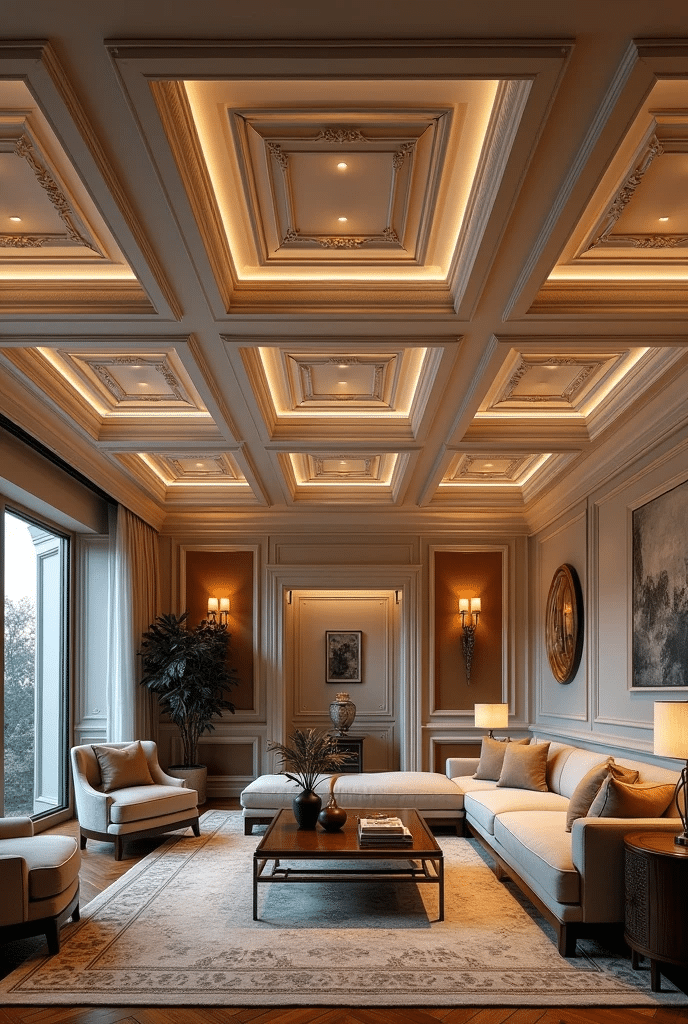
Coffered ceilings have long been a hallmark of luxury and architectural sophistication. Once reserved for grand estates and classical buildings, this stunning ceiling treatment is making a comeback in modern living rooms. Whether your style is traditional or contemporary, coffered ceilings can instantly elevate your home’s character. From design variations to materials and lighting, this guide will show you how to bring timeless charm and refined depth to your living space.
What Is a Coffered Ceiling?
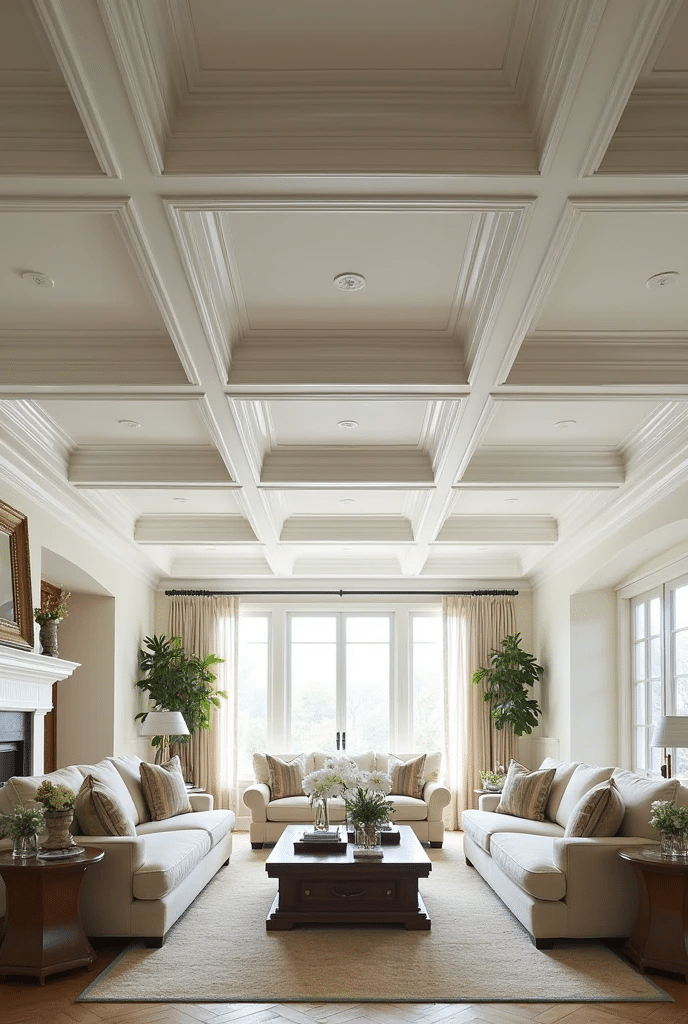
A coffered ceiling consists of a series of recessed panels, usually in a grid pattern, bordered by beams. These geometric indentations add architectural interest and create a sense of rhythm on an otherwise flat ceiling. Traditionally made from wood or plaster, coffered ceilings have evolved to suit a range of interior styles. Modern innovations have made it easier and more affordable to install them in residential homes, particularly in living rooms. The result is a dramatic, luxurious effect that adds value and style.
The History Behind Coffered Ceilings
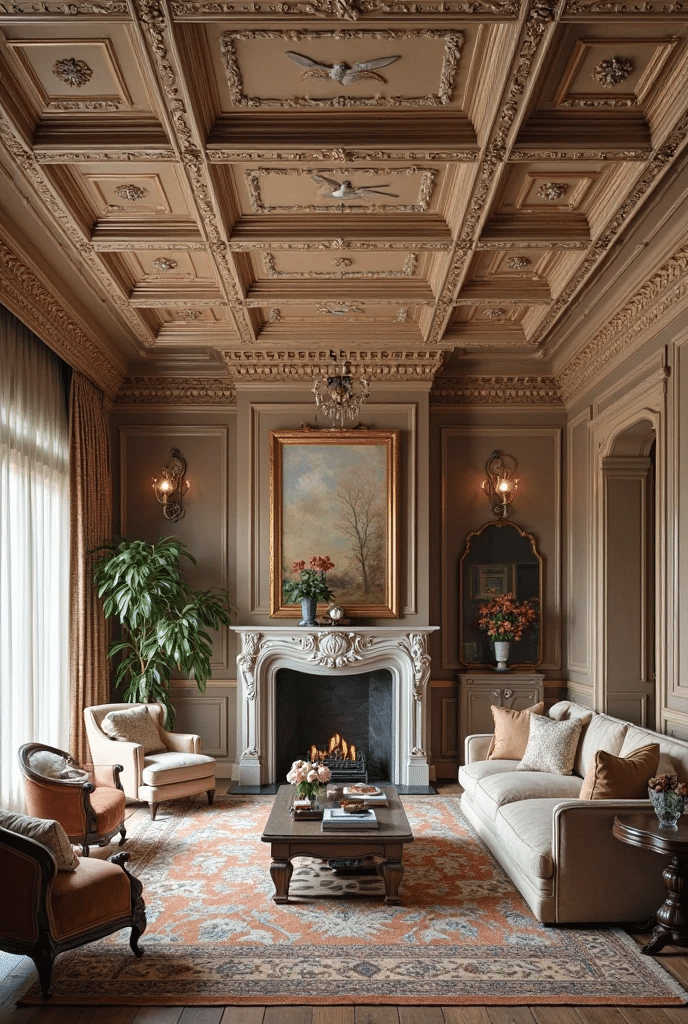
Coffered ceilings date back to ancient Roman and Greek architecture, where they were used to reduce the weight of heavy stone ceilings. Over time, their use became more decorative, particularly during the Renaissance and Baroque periods. You’ll often find them in historical buildings, cathedrals, and palaces, where they symbolize elegance and wealth. Today, the coffered ceiling continues to reflect that heritage of grandeur, now reimagined for modern homes. Their longevity speaks to their timeless aesthetic and architectural importance.
Why Choose a Coffered Ceiling for the Living Room?
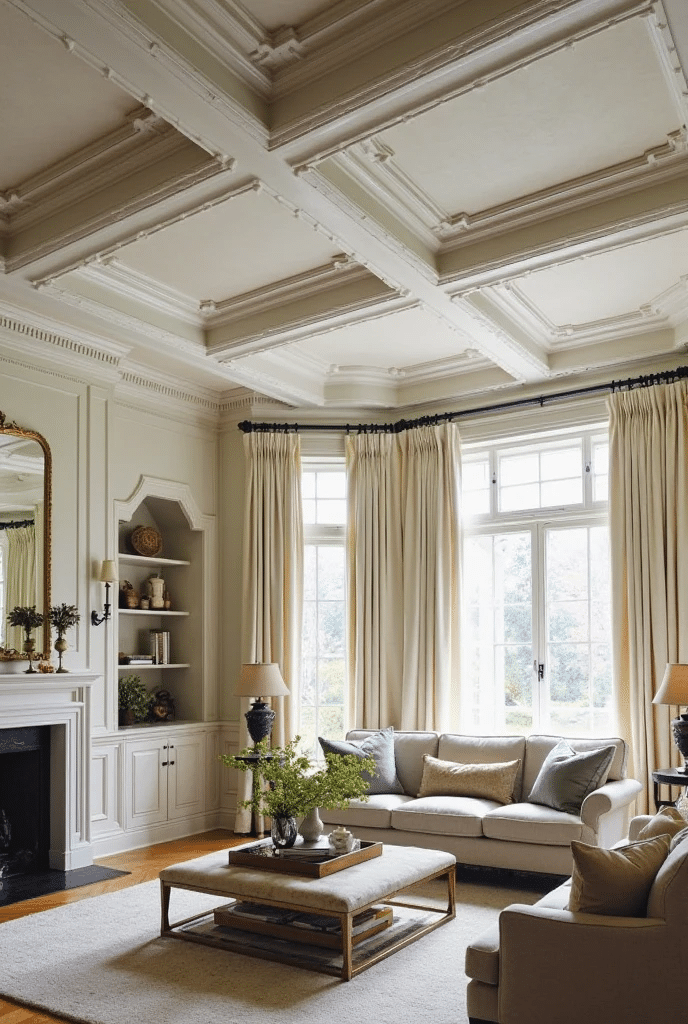
The living room is often the heart of the home—a place where style meets comfort. A coffered ceiling adds visual depth and texture, turning a plain space into a showstopper. It draws the eye upward, making the room feel larger and more expansive. Moreover, it offers an opportunity to conceal wiring, lighting, or HVAC systems without compromising design. If you want to make a bold architectural statement while maintaining a warm and inviting feel, a coffered ceiling is a perfect choice.
Popular Coffered Ceiling Styles for Living Rooms
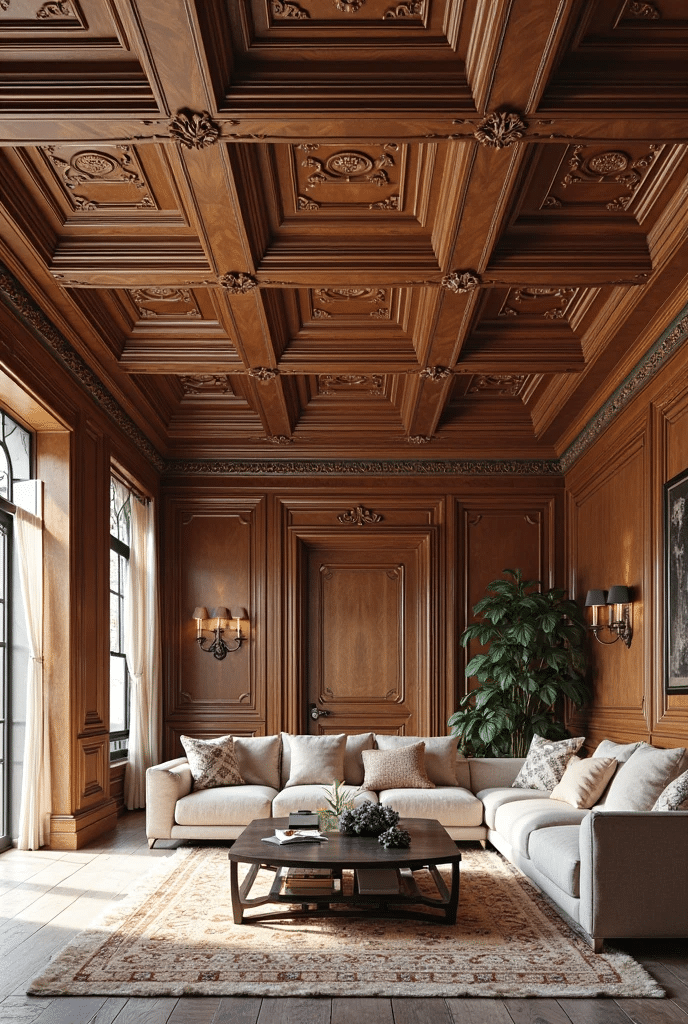
There are several coffered ceiling styles that work beautifully in living rooms. The classic square grid is a timeless favorite, especially in traditional or transitional homes. For a more modern look, rectangular or linear layouts offer sleek sophistication. Diamond and circular patterns add artistic flair to eclectic interiors. Some designers opt for shallow coffers for subtlety, while others choose deep beams for dramatic effect. The style you choose should reflect both your aesthetic preferences and your home’s architectural structure.
Materials Used in Coffered Ceilings
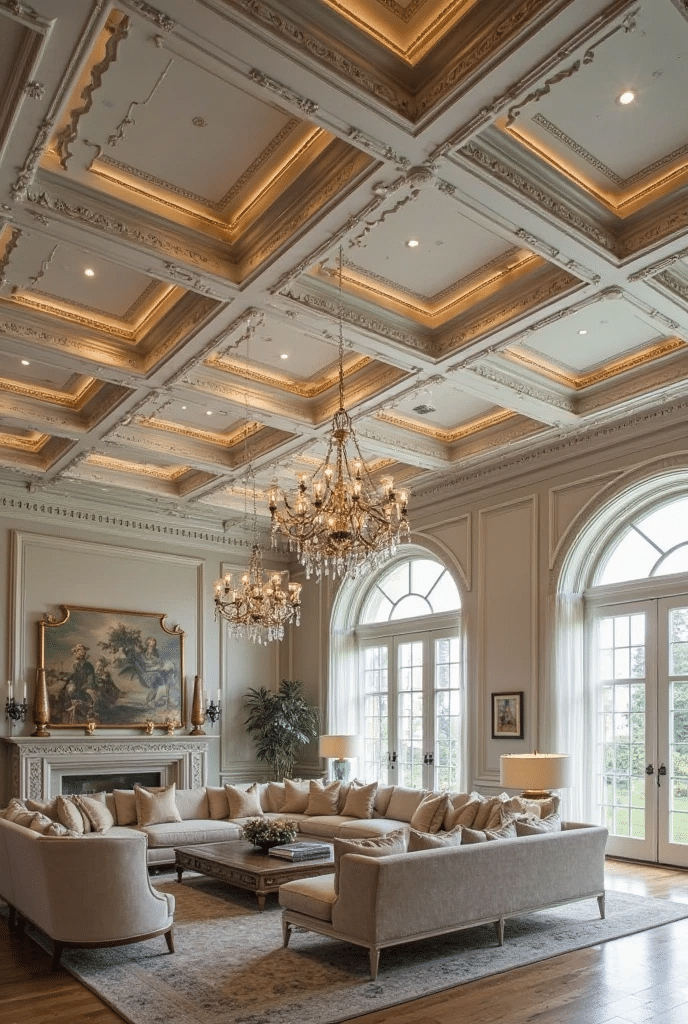
The choice of materials plays a key role in the overall effect of your coffered ceiling. Wood is the most traditional and lends warmth and texture to the space—perfect for rustic or classic styles. MDF and polyurethane are more affordable alternatives that mimic wood but are easier to install and maintain. Plaster or gypsum is ideal for a more seamless, painted look that suits contemporary interiors. Mixing materials like wood with painted trim can also offer a high-end custom appearance without overwhelming the space.
Choosing the Right Color Palette
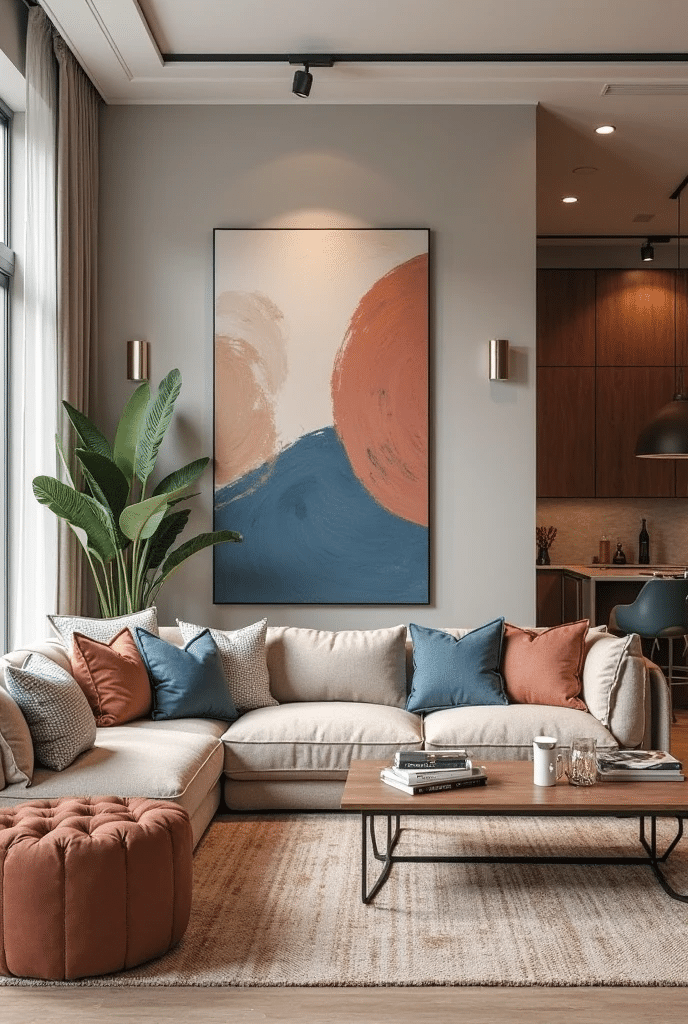
Color can transform the feel of a coffered ceiling. White or off-white beams against a matching ceiling create an elegant, subtle look that complements any décor. For a bold contrast, opt for dark beams—like espresso or charcoal—against a light background to add drama. You can even paint the recessed panels a slightly different tone or incorporate wallpaper for added texture. Choosing the right palette depends on whether you want the ceiling to blend in or stand out as a focal point.
Lighting Options for Coffered Ceilings
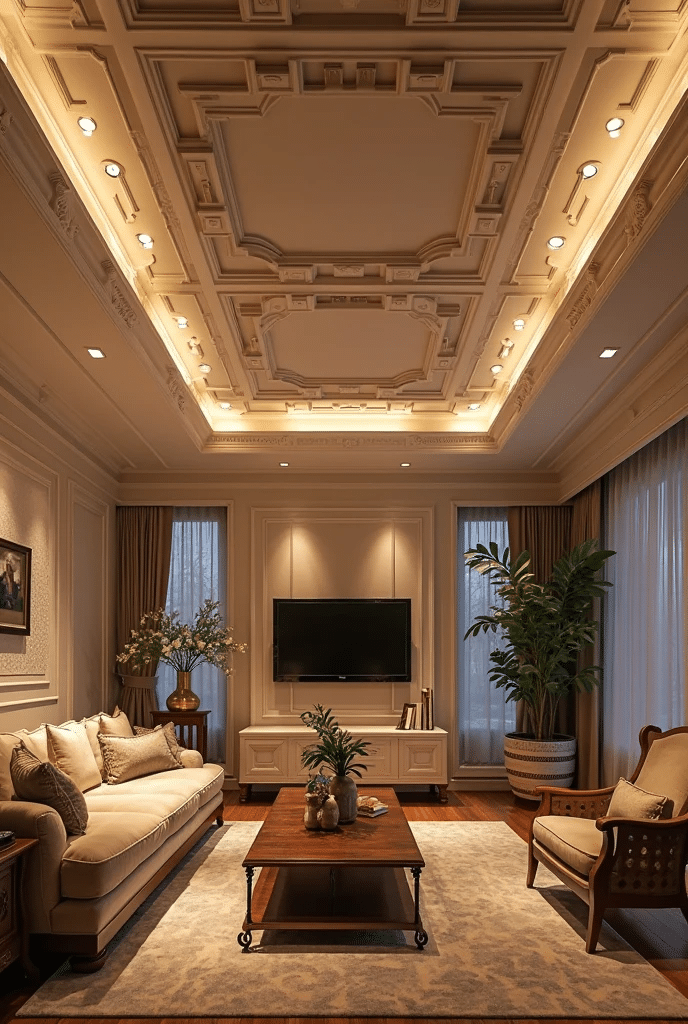
Incorporating lighting into a coffered ceiling design enhances both form and function. Recessed lights placed inside the panels provide ambient light while keeping the ceiling clean and uncluttered. LED strip lighting along the beams can add a soft, modern glow and accentuate the ceiling’s geometry. Chandeliers or pendant lights hung from the center of a coffered layout create a dramatic centerpiece. Dimmer switches allow you to adjust the mood and are ideal for multifunctional living rooms.
Coffered Ceilings in Small vs. Large Living Rooms
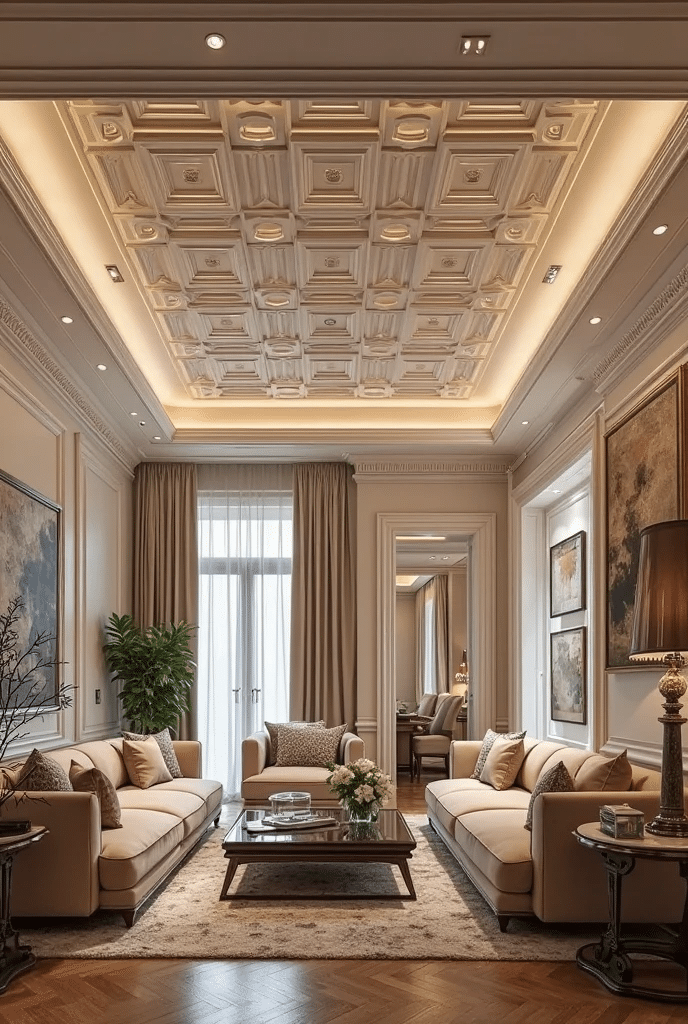
While traditionally found in large spaces, coffered ceilings can work in smaller living rooms too. For smaller areas, opt for shallow coffers with thin beams to maintain proportion and prevent the ceiling from feeling heavy. Light colors and subtle patterns help keep the space open and airy. In larger rooms, you have more freedom to experiment with deep, ornate beams and complex patterns. The key is scale—ensuring the design complements rather than dominates the room’s proportions.
Incorporating Coffered Ceilings into Different Interior Styles
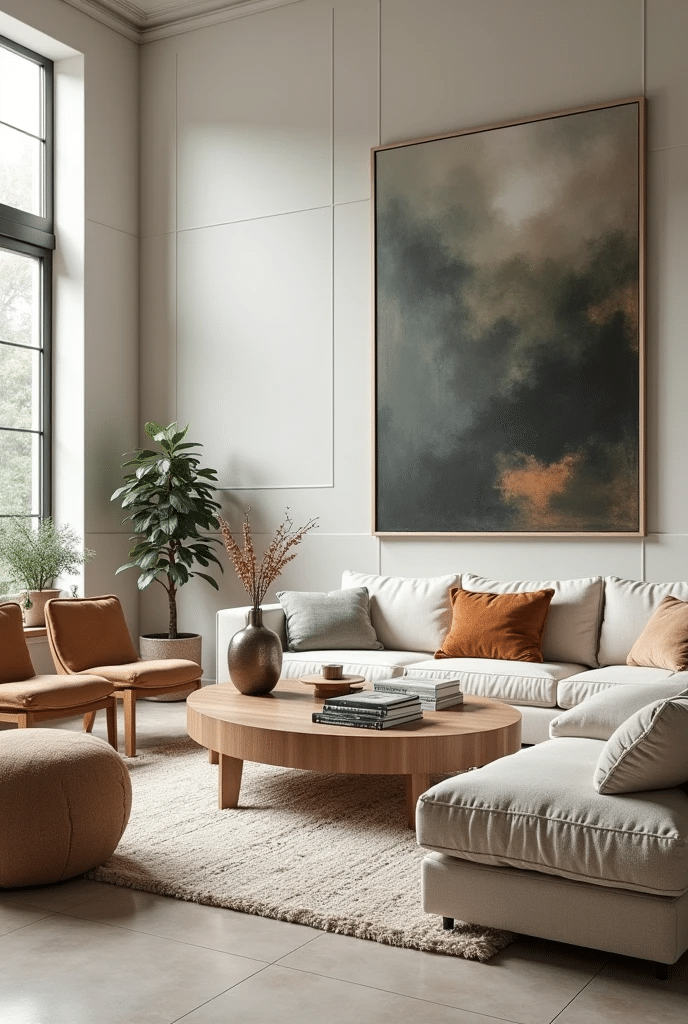
Coffered ceilings aren’t just for traditional homes—they can be adapted to fit almost any design style. In modern interiors, sleek beams and neutral tones create a minimalist aesthetic. In farmhouse or rustic homes, natural wood and textured finishes add warmth and character. For transitional spaces, blending classic beam structures with contemporary colors works beautifully. Even Scandinavian and industrial styles can benefit from a simplified coffered ceiling using subtle lines and matte finishes.
Cost Considerations and Budgeting
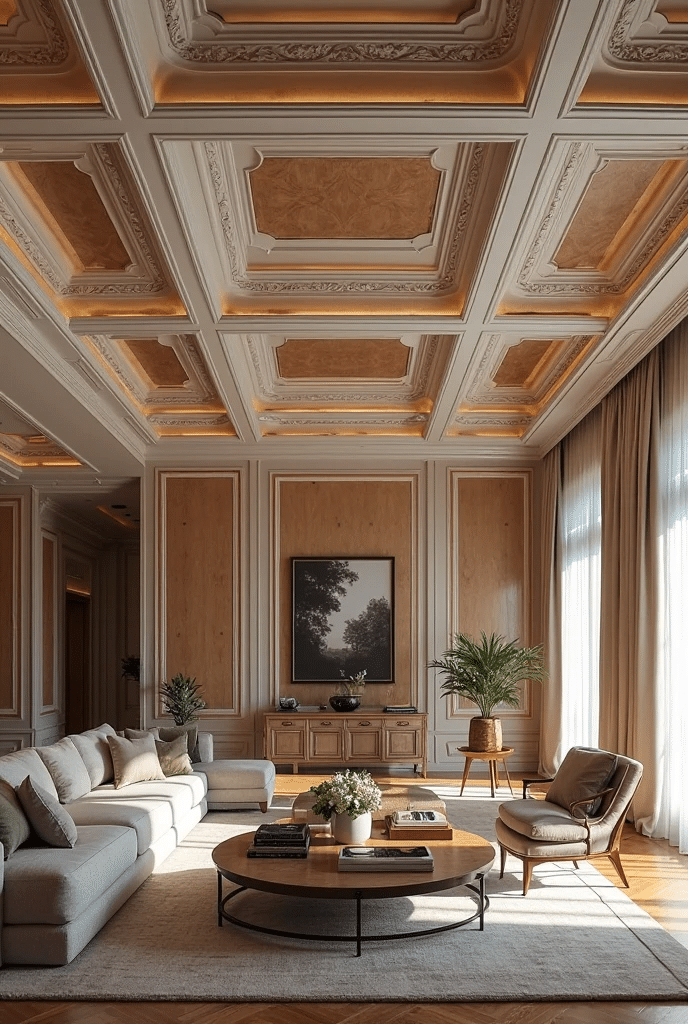
The cost of a coffered ceiling depends on several factors: materials, labor, ceiling height, and complexity of the design. On average, you can expect to pay anywhere from $25 to $100 per square foot. Custom woodwork and high ceilings will increase the price, while using MDF or prefab kits can reduce expenses. It’s important to factor in not only the upfront cost but also the long-term value it adds to your home. Working with a skilled contractor can help manage costs without sacrificing quality.
DIY vs. Hiring a Professional
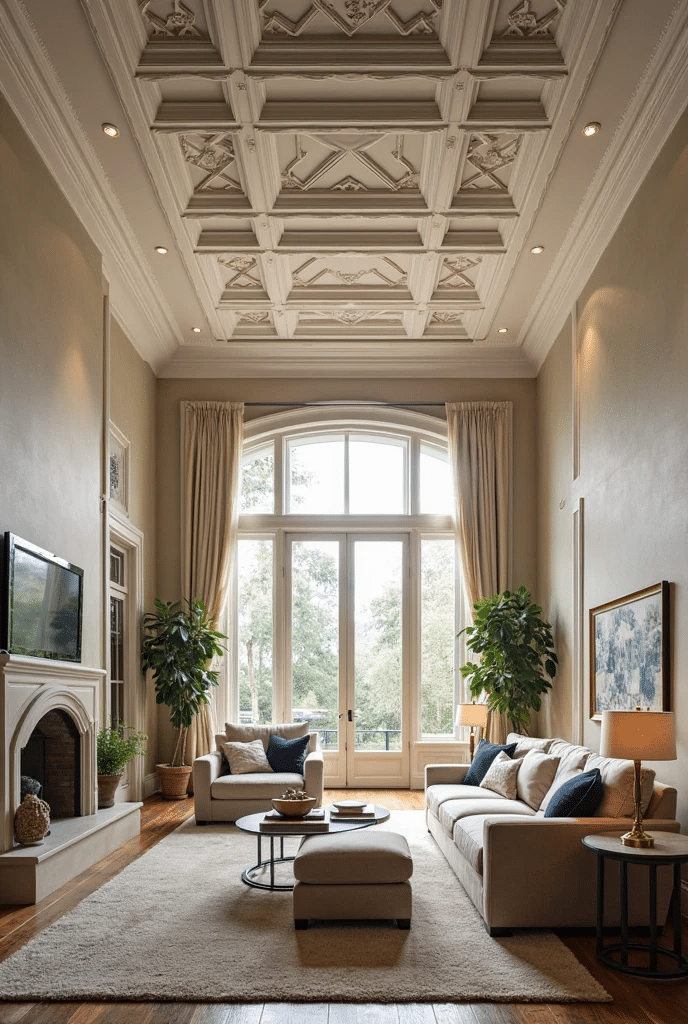
While some homeowners choose the DIY route for coffered ceilings, the precision required often makes professional installation the better option. An expert ensures that beams are level, symmetrical, and securely anchored. Professionals also understand how to work with existing ceiling conditions, such as uneven surfaces or hidden wiring. If you have carpentry skills and a straightforward design, a DIY project may be doable. But for complex patterns or large rooms, hiring a pro guarantees polished results.
Common Mistakes to Avoid
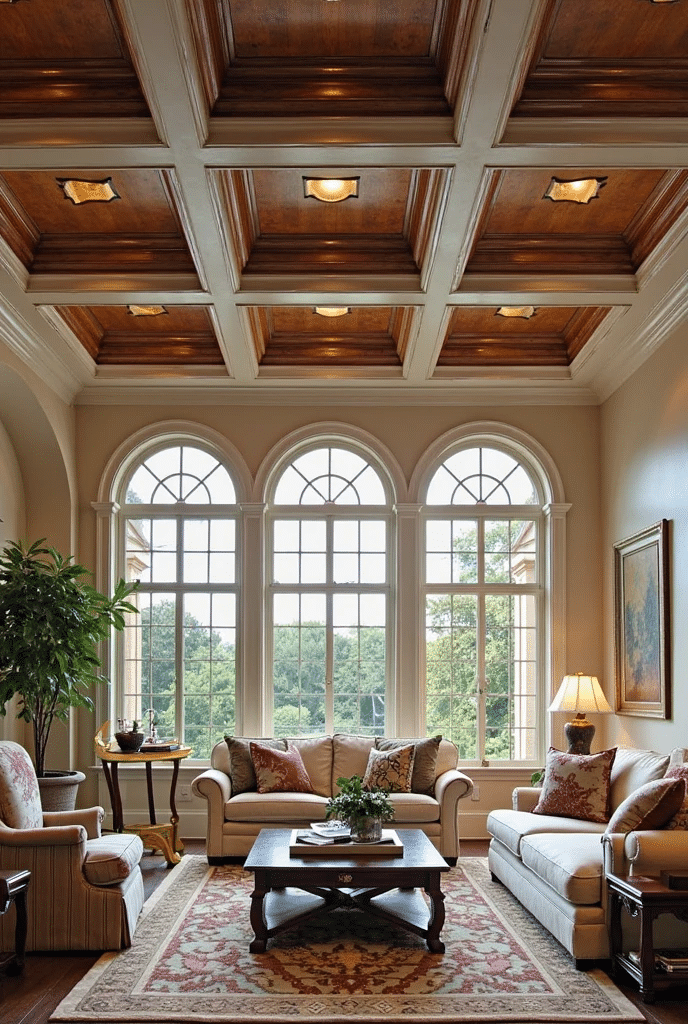
When planning a coffered ceiling, avoid beams that are too bulky or disproportionate to the room’s size. Improper alignment or spacing can make the ceiling look chaotic instead of refined. Overuse of dark colors can also make the room feel closed in, especially if natural light is limited. Skimping on materials or precision may lead to warping or cracking over time. Always plan carefully, measure twice, and consult with an expert if needed to ensure lasting beauty and function.
Combining Coffered Ceilings with Other Architectural Elements
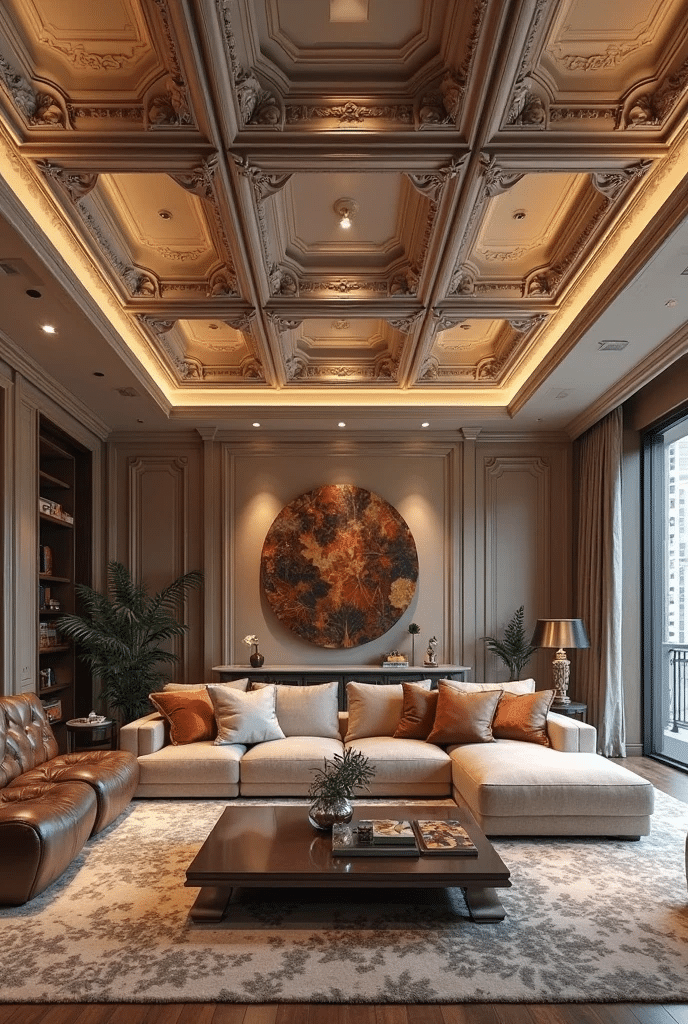
To create a cohesive look, consider how your coffered ceiling interacts with other features like crown molding, fireplace mantels, or wall paneling. Coordinating materials and finishes can tie all elements together beautifully. For instance, matching wood tones from the ceiling beams with your hardwood floors or built-ins adds harmony. In open-plan spaces, using similar beam patterns in adjacent areas like the dining room helps maintain flow and consistency throughout the home.
How Coffered Ceilings Affect Acoustics
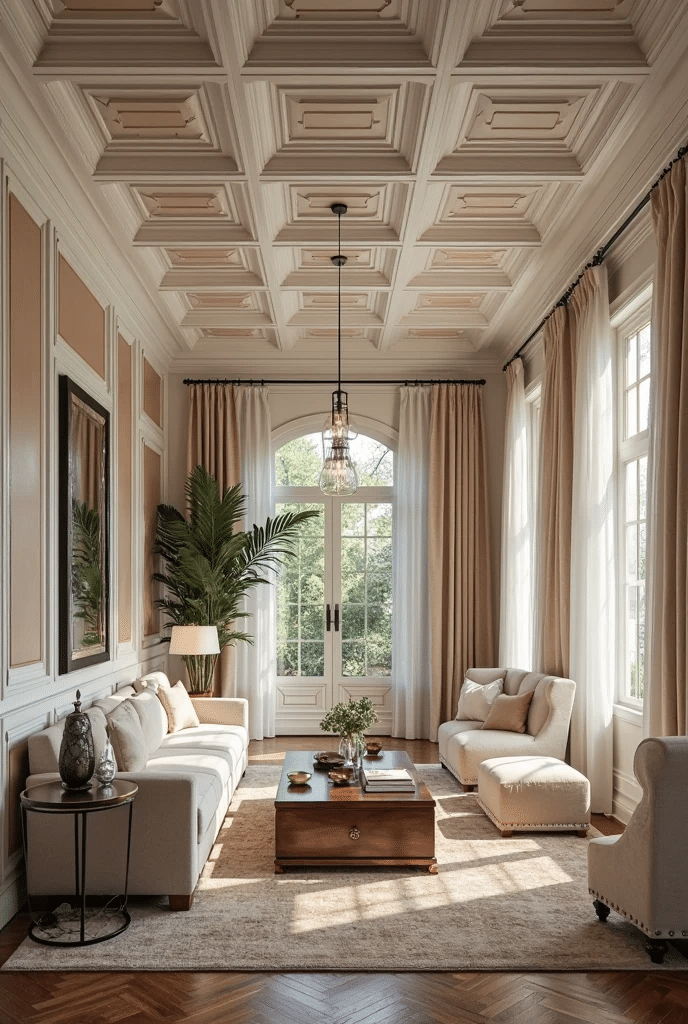
Beyond aesthetics, coffered ceilings can also impact room acoustics. The beam-and-panel structure helps to diffuse sound waves, reducing echo and enhancing audio quality. This is particularly beneficial in large living rooms or media areas where sound clarity matters. Pairing the ceiling with soft furnishings like rugs and curtains further improves acoustics. For audiophiles or home theater enthusiasts, a coffered ceiling is not only beautiful but also functionally smart.
Maintenance and Long-Term Care
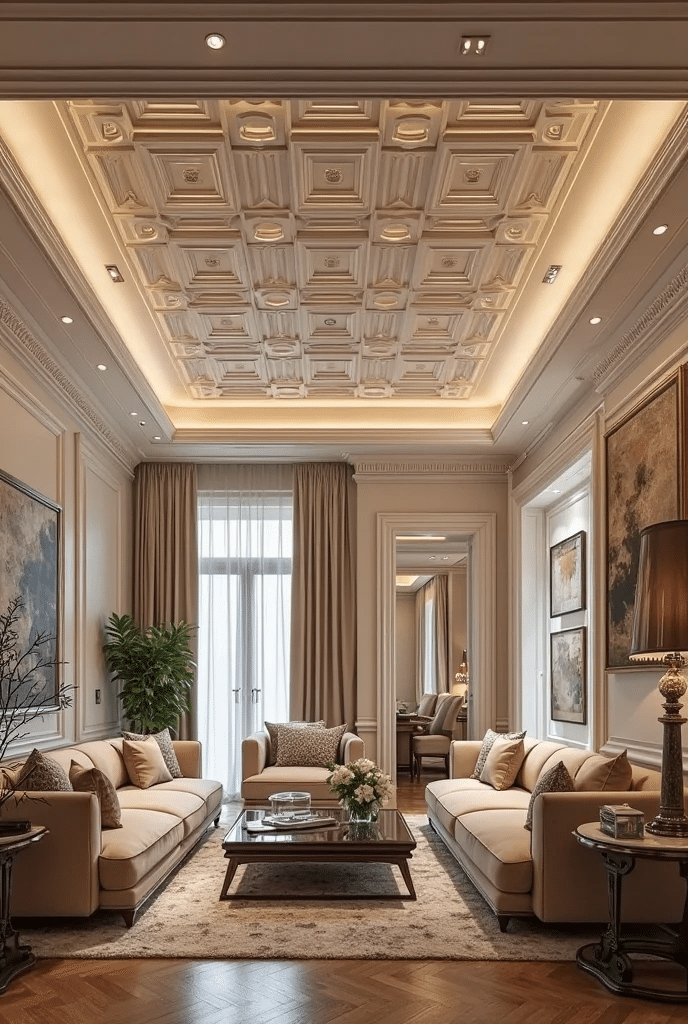
Maintaining a coffered ceiling is relatively simple, especially with proper materials and finishes. Regular dusting and occasional spot cleaning keep the surface looking fresh. For painted ceilings, touch-ups may be needed over time to address cracks or chips. Wood beams may require occasional polishing or resealing depending on exposure to sunlight and humidity. If your home has high ceilings, investing in a telescoping duster or professional cleaning service makes upkeep easier.
How Coffered Ceilings Impact Property Value
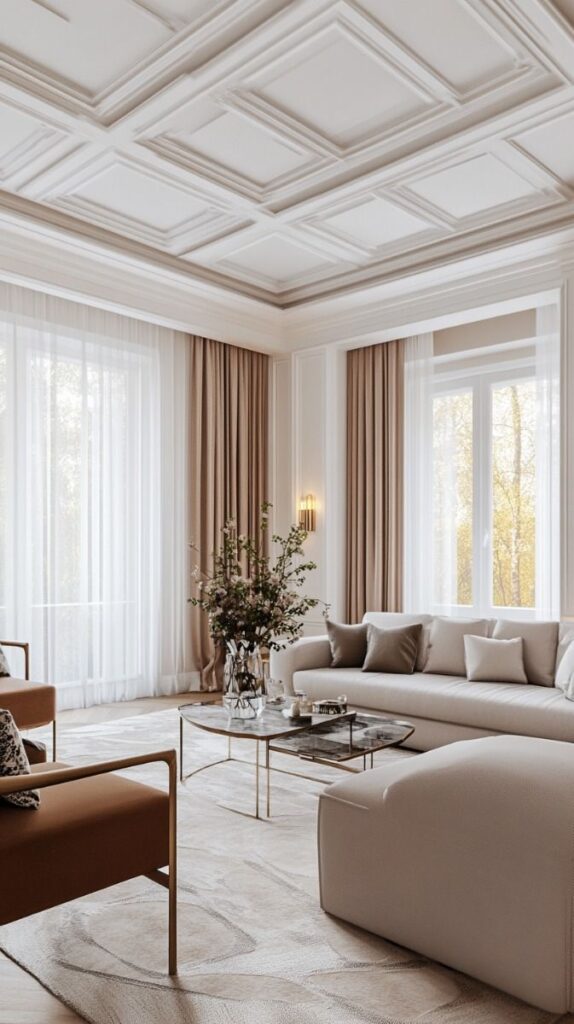
Adding a coffered ceiling to your living room can significantly enhance your home’s resale appeal. Buyers often associate this architectural detail with luxury, craftsmanship, and thoughtful design. According to real estate experts, coffered ceilings can increase perceived property value, especially when they complement the home’s overall aesthetic. While the return on investment depends on the market, a beautifully executed ceiling feature often becomes a memorable selling point.
Trends in Coffered Ceiling Design
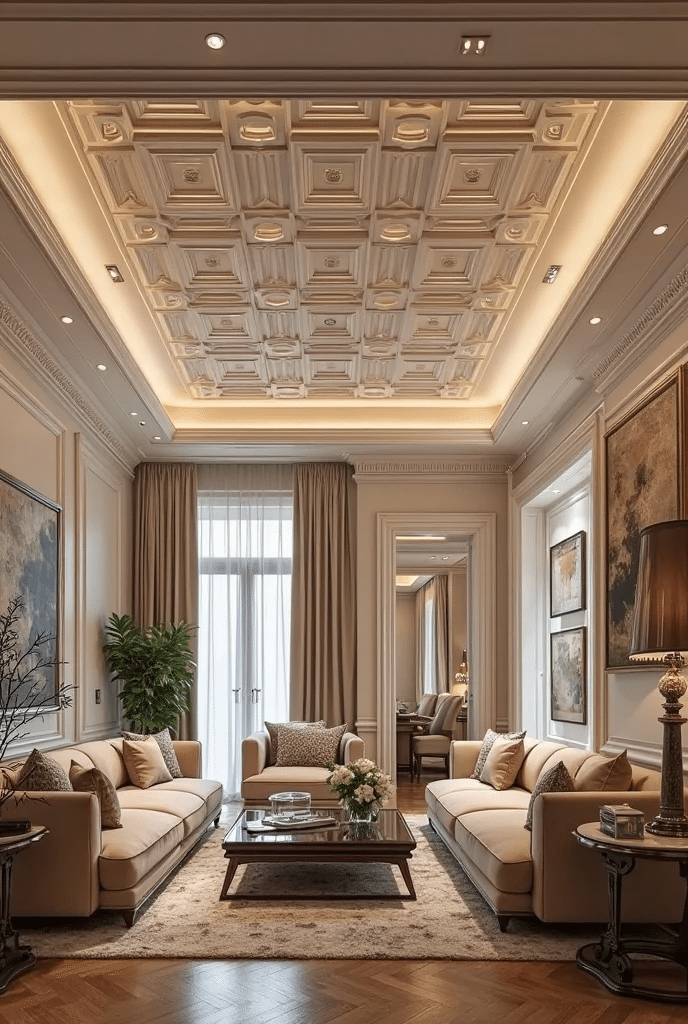
Contemporary coffered ceiling trends lean toward simplicity and subtlety. Many homeowners are embracing monochromatic palettes and shallow coffers for a modern, clean look. Others are experimenting with mixed materials, such as combining painted panels with raw wood beams. Integrated LED lighting and metal inlays are also rising in popularity, offering a fresh twist on a classic design. The key trend is personalization—using coffered ceilings to reflect your unique style while enhancing architectural integrity.
Final Thoughts: Is a Coffered Ceiling Right for You?
A coffered ceiling can completely transform the look and feel of your living room, adding depth, elegance, and lasting value. Whether you prefer a classic or modern style, this design feature adapts beautifully to different aesthetics and room sizes. Though installation requires investment, the long-term visual impact and charm make it well worth considering. If you’re ready to elevate your space with architectural sophistication, a coffered ceiling might just be the crown jewel your living room needs.

Hazel Collins is the creative voice behind Room Layered. With years of blogging experience, she shares her passion for home decor, DIY projects, and styling tips to help readers create beautiful, personalized spaces. Her ideas blend charm with practicality, making home inspiration feel both achievable and stylish.